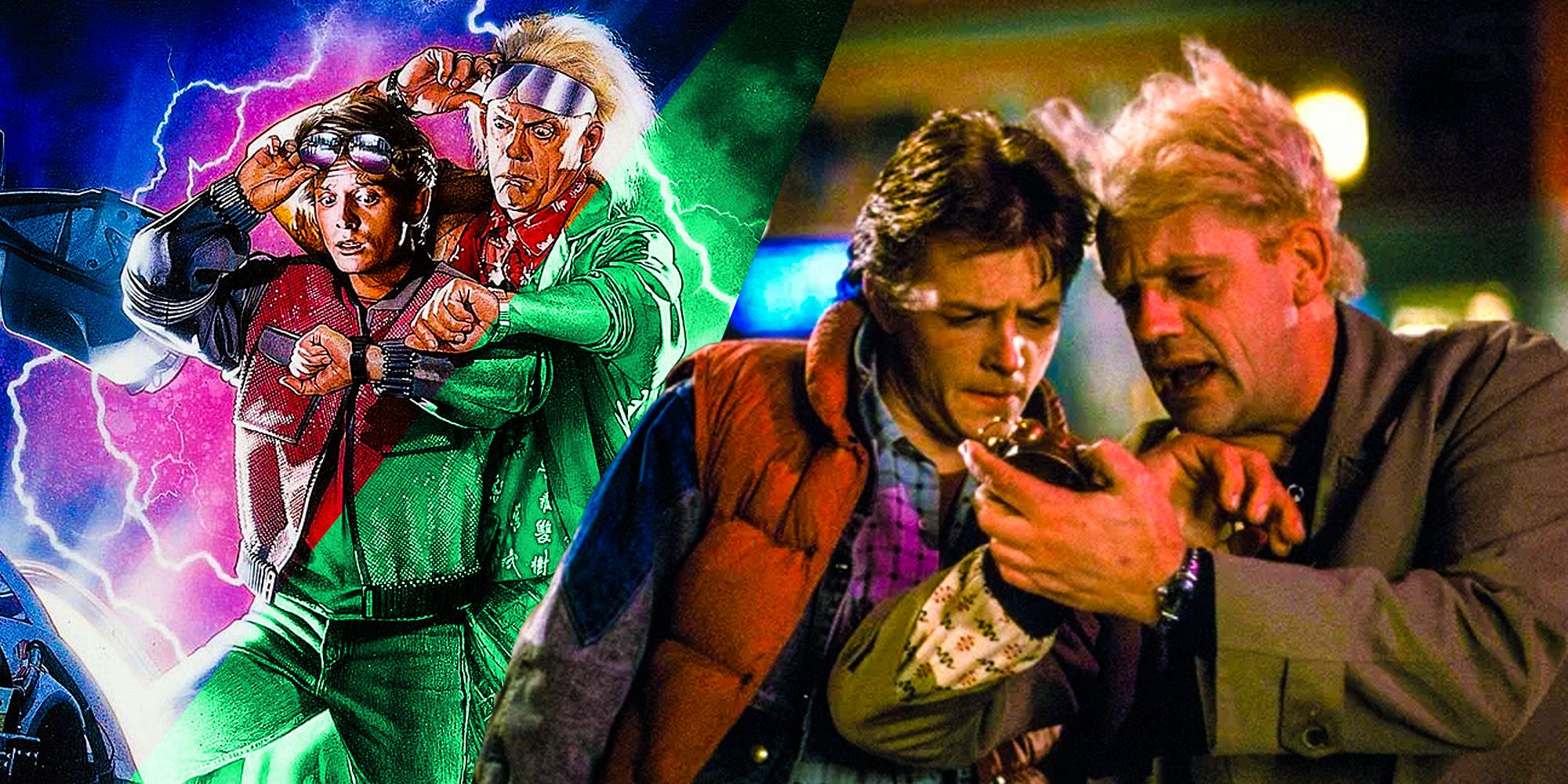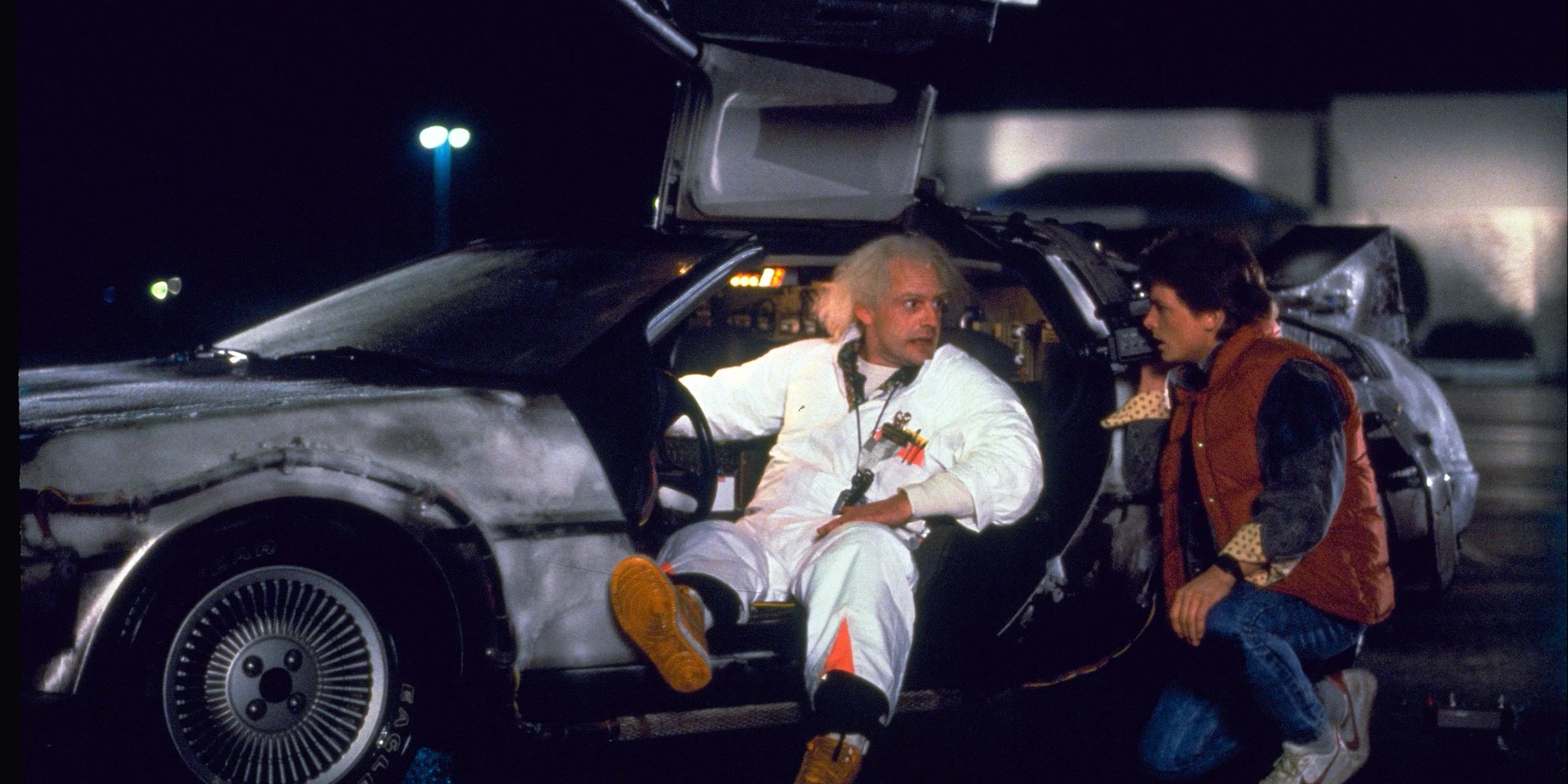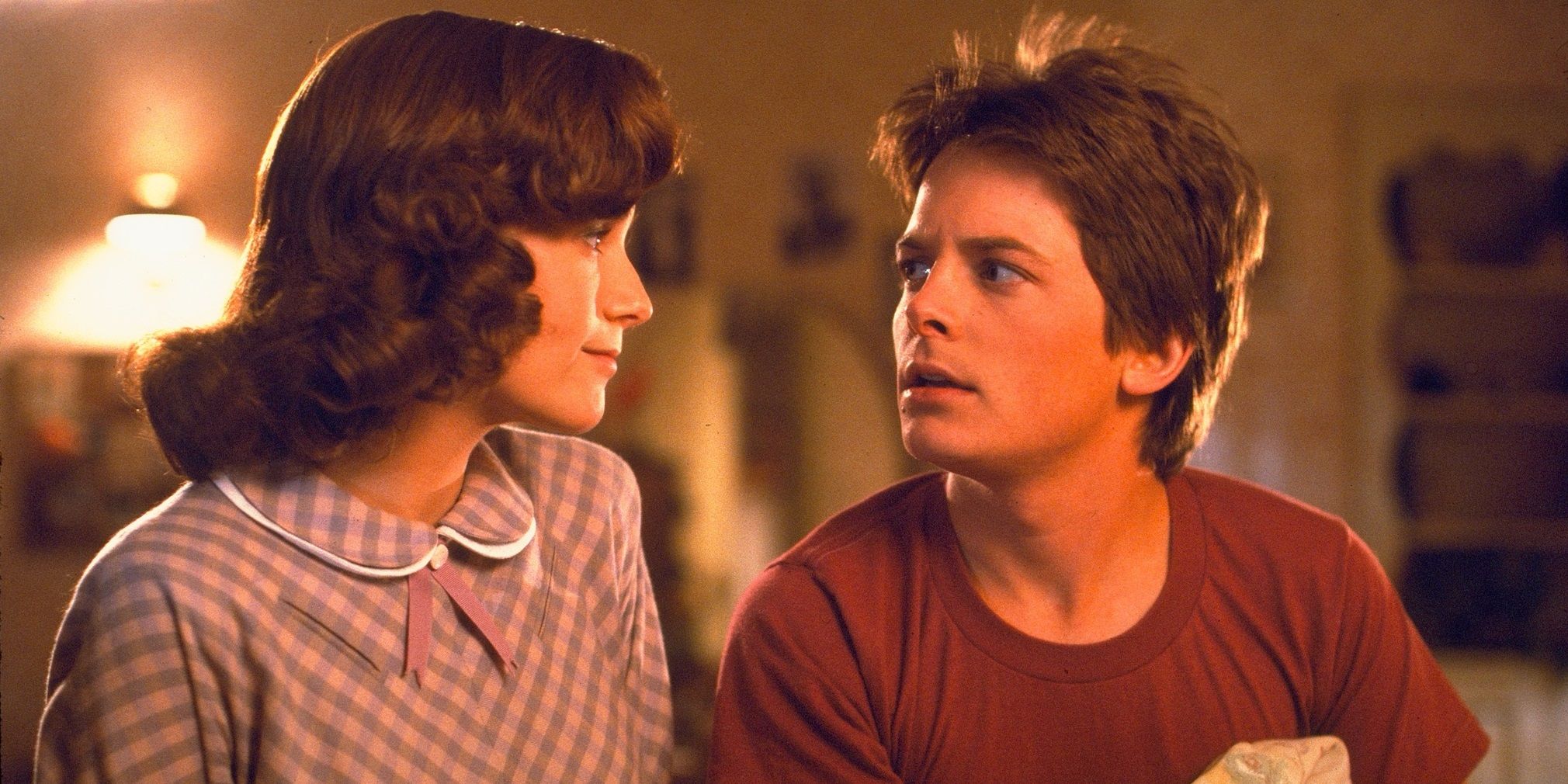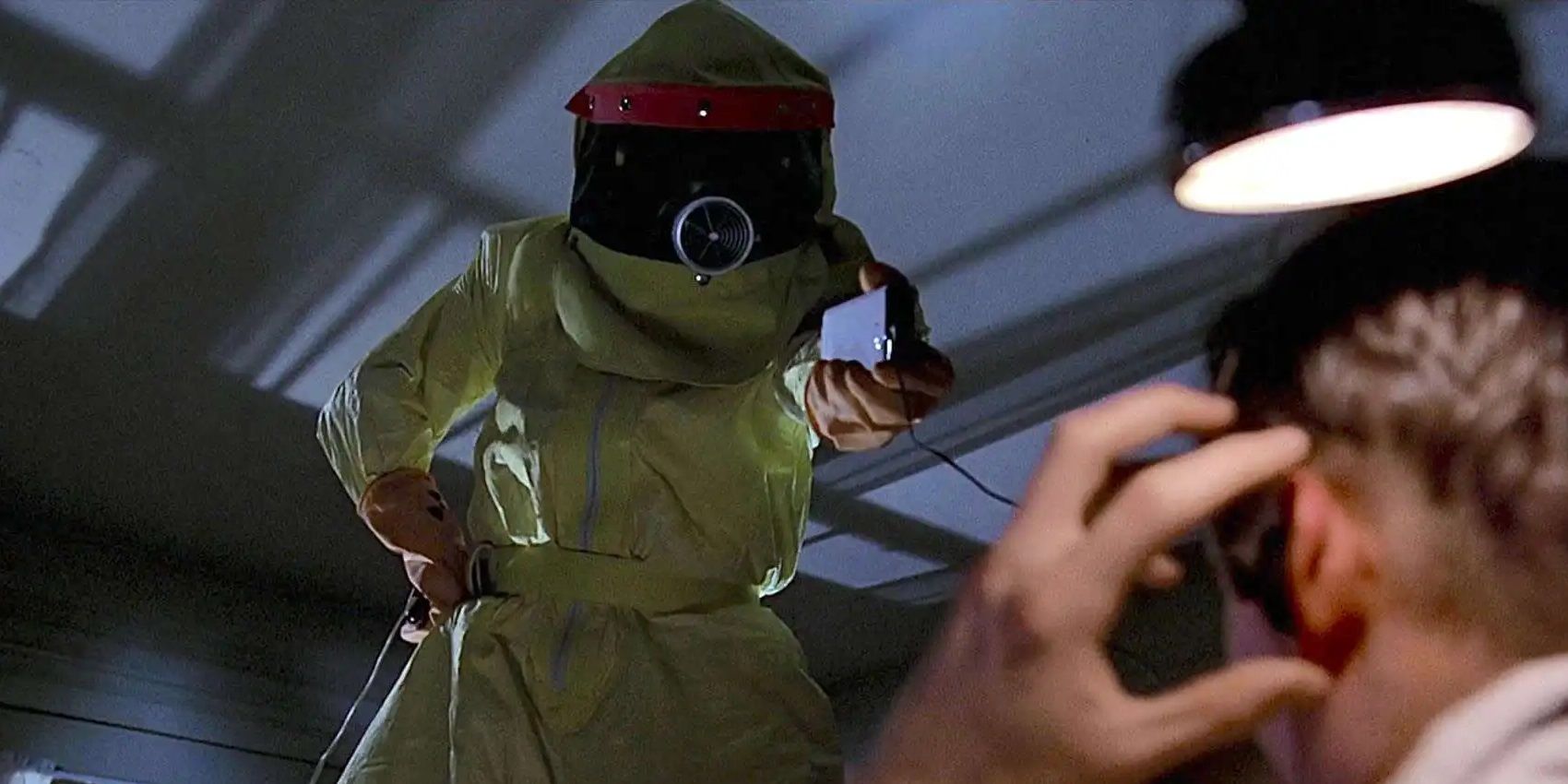Back To The Futures Time Travel Explained How It Works & Is It Accurate
Back To The Future’s Time Travel Explained: How It Works & Is It Accurate?
Contents
Back To The Future is one of cinema’s most iconic time travel stories, but how does the process work, what are the rules, and is it accurate?
You Are Reading :[thien_display_title]

How does time travel work in iconic 1980s classic Back To The Future, and does the concept bear any relation whatsoever to real science? Released in 1985, Back To The Future wasn’t Hollywood’s first dalliance with traveling through time, and certainly hasn’t been the last. More than three decades later, however, it’s still the movie everyone inevitably comes back to when discussing matters of a temporal nature. Back To The Future is also regularly dubbed “the perfect film,” and it’s not hard to see why. With vibrant characters, fascinating settings and one of the leanest big screen plots you’ll find, Marty McFly’s story is somehow both quintessentially 1980s, and utterly timeless.
Fun and adventure might be Back To The Future’s mission statement, but the franchise makes no concessions with its sci-fi elements. Robert Zemeckis and Bob Gale developed a tightly woven set of rules for traveling through time, and despite Michael J. Fox’s constant meddling, the timeline shenanigans hold up, generally honoring the script’s own logic. Back To The Future might be a light-hearted 1980s romp, but to paraphrase Doc Brown, the film’s time travel is some serious sh…
Throughout Back To The Future and its two worthy sequels, Doc Brown and Marty McFly learn the mechanics of time travel on the job and, more pertinently, find out the consequences of disrupting the past. The audience, meanwhile, discover how Back To The Future’s time-bending gimmick compares to other works of fiction. Here’s the full breakdown of Back To The Future’s time travel rules, which perhaps aren’t as unrealistic as you might assume (DeLorean not withstanding).
How Time Travel Works In Back To The Future, Explained

In Back To The Future’s opening act, Doc Brown helpfully explains the requirements for mankind to breach the time barrier – his miraculous new scientific breakthrough. Inside the DeLorean are a set of time circuits and three readouts displaying the current date, the intended destination, and the most recent trip made (a helpful plot device for later). The most important device, however, is Doc Brown’s flux capacitor invention, powered by 1.21 gigawatts of electricity. Brown begins Back To The Future by powering the DeLorean with plutonium, but he later turns to alternative sources – a lightning strike, trash in a fusion reactor, and steam, all of which are more environmentally-friendly and less likely to upset Libyan terrorists. Taking the DeLorean to the magic speed of 88mph completes the cocktail of ingredients needed for time travel in Back To The Future’s world.
Side effects of traversing the time-space continuum include the famous fiery tire tracks, and the car turning ice-cold for a brief time. Doc Brown also suggests the DeLorean’s steel casing is vital for dispersing the flux capacitor’s energy. Were a lesser substitute used, the flux particles might not wrap around the entire vehicle effectively enough to send it through the time barrier.
In Back To The Future’s rule book, there’s no difference between venturing into the past and rocketing ahead into the future. Both require the same process, and all Marty needs to do is alter the date on the time circuits. As Doc Brown’s initial experiment with Einstein the dog proves, trips in both directions are instantaneous – the mutt is sent one minute into the future with a digital clock, and when he materializes 60 seconds later, the readout is exactly a minute slower than it should be. Furthermore, the traveler never moves in space. When the DeLorean hops through the years, it lands in exactly the same physical location from which it departed.

Broadly speaking, there are three interpretations of time travel’s effects in fiction. The “what happened, happened” hypothesis posits that altering history is impossible, and any attempt to do so might even cause whatever the traveler is trying to avoid. Examples of this can be found in Lost and Terminator, where John Connor sends his best friend back in time to impregnate his mother. The second variant is the “multiple timelines” idea. Visiting the past and changing history creates a breakaway reality, separate from the original, where any alterations play out. Thanks to Avengers: Endgame, we know the MCU utilizes this format. The last model, and the one Back To The Future subscribes to, is the single, changeable timeline. There are no multiple branch realities, and changing the past has a corresponding effect on the present day.
This is perfectly demonstrated by Back To The Future’s “Twin Pines Mall” sign. As you’ve no doubt noticed already, the sign alters to “Lone Pine Mall” after Marty visits 1955 and knocks over a tree in Doc Brown’s DeLorean. If “what happened, happened” were true, then the sign would’ve read “Lone Pine” from the start. In the MCU, meanwhile, two signs would exist in different timelines – the original “Twin Pines” and the new “Lone Pine”. The shifting sign proves the malleable nature of Marty’s world in Back To The Future, but Robert Zemeckis doesn’t go so far as to employ the Butterfly Effect. According to the Butterfly Effect theory, even the slightest change to the past would lead to an unrecognizable future via chain reaction. Back To The Future’s time travel rules are far more localized and specific – i.e. knocking down the tree changes the mall sign, but everything else remains the the same.
How Scientifically Accurate Back To The Future’s Time Travel Is

Sorry to be the bearer of bad news but time travel is, at the time of writing, not possible. Fortunately, that hasn’t deterred more scientifically-minded folk from pondering the possible and plausible of crossing the quantum wake. One hurdle Back To The Future (among many other time travel tales) must overcome is the laws of physics. If a person were to travel faster than the speed of light, they could theoretically move into the future, but the principle doesn’t work in reverse, which would rule out traveling into the past entirely. As New Scientist duly points out, wormholes could provide the answer. According to Kip Thorne (physicist, smarter than us), if one side of a wormhole travels at light speed and the other side remains fixed, time begins to dilate, creating a “past” and “future” on either side of the tunnel. Though Thorne’s theory is hotly debated, it lends a certain amount of credibility to the DeLorean’s two-way time travel in Back To The Future.
Before etching Robert Zemeckis’ name on that Nobel prize, it’s worth considering that scientists generally believe the “multiple realities” version of time travel is the most theoretically sound – that when someone changes the past, they’re creating an alternate timeline. String Theory has also been used to corroborate the idea of parallel realities, albeit not due to interference from time-meddlers. In Back To The Future, Marty and Doc Brown seem to be going over the same single timeline, erasing and amending history as they see fit (the Lone Pine, Biff’s sports almanac, Marty disappearing). This would mean Back To The Future’s time travel perhaps isn’t as realistic as it could be – amazing for a film in which every McFly male looks like Michael J. Fox.
More recently, Germain Tobar of the University of Queensland poured cold water on Back To The Future’s time travel, coming out in support of the “what happened, happened” theory. In layman’s terms, Tobar purports that if an attempt to change history were made, the universe would “recalibrate” around the event. To return to Back To The Future’s “Twin Pines Mall” example, Marty would knock down the tree in 1955, and old man Peabody would plant another, hence the sign remains the same, and altering the past is a futile endeavor. Again, the (theoretical) science contradicts Back To The Future… but does it actually matter?
Although various figures from the scientific community have offered their thoughts on the mechanics of time travel in a real-world scenario, their explanations are deeply speculative, and only cover specific elements of the overall concept (how to reach the past, changing history). As much as scientists might disagree with him, Robert Zemeckis’ interpretation of time travel is just as valid as anyone else’s until that first trip is made. Any time travel story requires its own fictional set of laws and limitations – something science cannot yet offer. For movies, the priority shouldn’t be adhering to reality, but keeping consistent to whatever rules are established, and Back To The Future is, more or less, a success in this regard.
Link Source : https://screenrant.com/back-future-time-travel-rules-accuracy-science-explained/
Movies -Doctor Who The Best (And Worst) Companions So Far
Every New Robotic Animal In Horizon Forbidden West (So Far)
Did Doctor Who Write Out The Companions For 2020 Christmas Special
Black Widow Reveals A Secret That Redefines Marvels Most Hated Event
Every TV Show Appearance By Jay And Silent Bob
Every Guillermo Del Toro Movie Ranked (According To IMDb)
Call of Duty Black Ops 4 Everything You Need to Know
